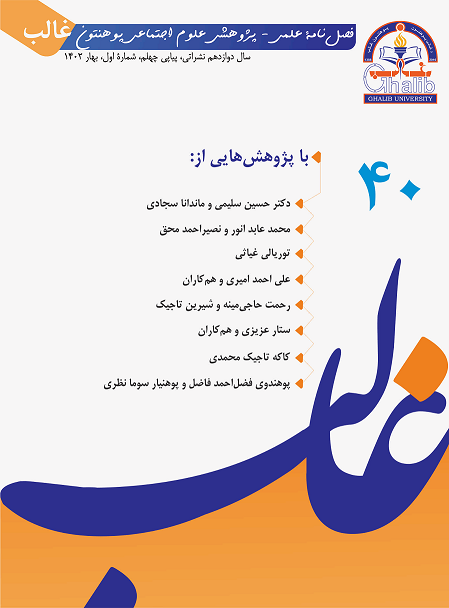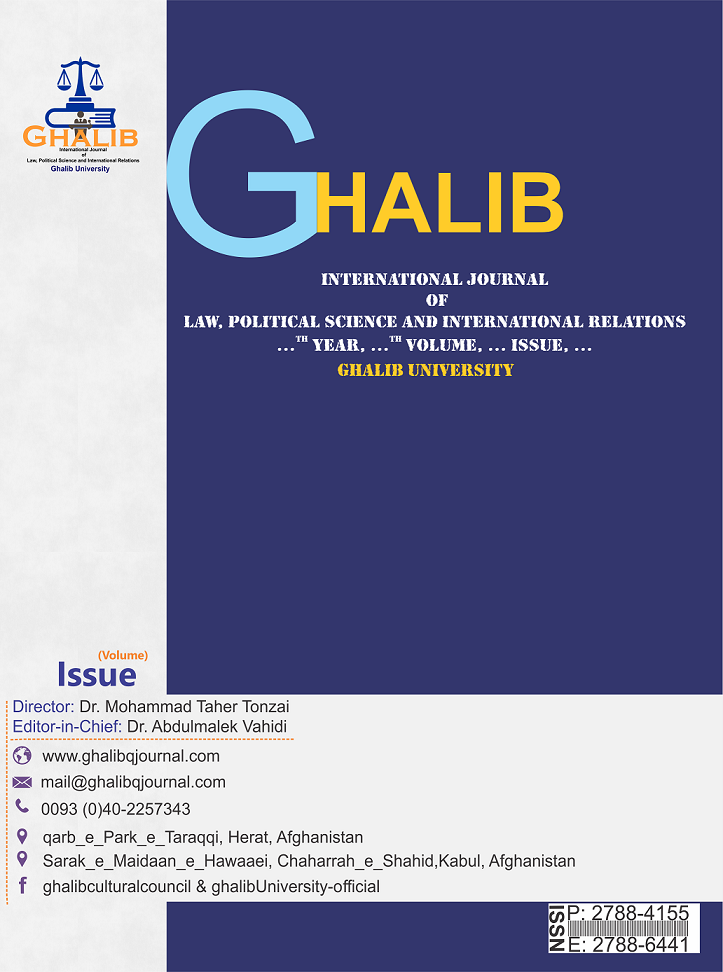Epic elements in the story of Dahhak in Shahnameh
DOI:
https://doi.org/10.58342/ghalibqj.V40.I1.8Keywords:
Ferdowsi, Shahnameh, Dahhak story, epic elementsAbstract
Ferdowsi is the greatest epic writer of ancient Iran, and Shahnameh is the most valuable epic work in Persian literature. This tall palace of the Persian order can be viewed from different perspectives. Stories play an important and productive role in the Shahnameh and can be analyzed from different angles. One of the stories in the Shahnameh is the story of Dahhak. The purpose of this research was to find an answer to the question: What are the epic elements and symbols in Dahhak's story? This research is based on the goal, fundamental-theoretical, based on the nature of the data, qualitative and the method of data criticism, analytical-descriptive. The findings of the research show that: the important elements of this story are warfare and knighthood, the presence of animals, ambiguous times and places, prophecy and killing babies, dreaming and magic.
References
آل ابراهیم دهکردی، صبا؛ تقی پور، شهرام، و رضایی، حمید. (1393). «بررسی و تحلیل نقش آب در نگارههای داستان ضحاک شاهنامۀ طهماسبی». ایران: مجلۀ مطالعات هنر اسلامی. 10(20). 7-19. https://sid.ir/paper/491806/fa>.
جعفری دهقی، محمود؛ پوراحمد، مجید. (1392). «گرز گاوسر فریدون و منشأ آن». ایران: دوفصلنامۀ ادب فارسی. 3(2). <39-57. doi: 10.22059/jpl.2014.50317>.
3. جعفری لنگرودی، محمد جعفر. (1369). راز بقای ایران در سخن فردوسی. تهران: گنج دانش.
چاپاتی گرگیج، جلالالدین. (1392). «تحلیل شخصیت کندرو، پیشکار ضحاک، بر مبنای شاهنامۀ فردوسی». همایش علمی شاهنامه و پژوهشهای آیینی. مشهد: <https://civilica.com/doc/852358>.
حیدری، علی. (1391). «تحلیل عرفانی داستان ضحاک». ایران: ادبیات عرفانی و اسطورهشناختی. 8(26). 42-65. <https://jmmlq.stb.iau.ir/article_511650.html>.
سهرابنژاد، علیحسن. (1391). «تقابل دوگانۀ نشانهها در داستان ضحاک». ایران: نشریۀ کاوشنامۀ زبان و ادبیات فارسی. پیاپی 25. <https://www.magiran.com/paper/1120207>.
شميسا، سيروس. (1386). سبكشناسي نثر. چدهم. تهران: ميترا.
شميسا، سيروس. (1387). انواع ادبی. چ سوم. تهران: ميترا.
صالح رامسری، محمد قاسم. (1369). ضحّاکِ شاهنامۀ فردوسی. چ چهارم. تهران: امیرکبیر.
صفا، ذبیحالله. (1363). حماسهسرایی در ایران. چ چهارم، تهران: امیرکبیر.
عبادیان، محمود. (1372). درآمدی بر سبکشناسی در ادبیات. چ دوم. تهران: جهاد.
فردوسی، ابوالقاسم. (1386). شاهنامه. چ پنجم. تهران: آبان.
محجوب، محمدجعفر. (1371). آفرین فردوسی. تهران: مروارید.
مرتضوی، منوچهر. (1372). فردوسی و شاهنامه. چ دوم. تهران: پژوهشگاه.
معینی، فرزانه. (1389). «بررسی برخی عناصر داستانی در داستان ضحاک (پیرنگ، شخصیت و شخصیت پردازی، زاویه دید، صحنه و صحنه پردازی)». ایران: نامة پارسی. شمارة 52. <http://ensani.ir/file/download/article/20120413175018-5163-153.pdf>.
ملکالشعرا بهار، محمدتقی. (1377). سبکشناسی. به اهتمام کیومرث کیوان. تهران: مجید.
نولدکه، تئودور. (بیتا). حمّاسة ملّی ایران. ترجمۀ بزرگ علوی. بامقدّمۀ سعید نفیسی. چ سوم. تهران: سپهر.
یزدانپناه، سپیده. (1386). «نقد روانشناختی شخصیت ضحاک در شاهنامه». ایران: پژوهشنامۀ ادب حماسی (فرهنگ و ادب سابق). 3(5). <https://dorl.net/dor/20.1001.1.23225793.1386.3.5.9.0>.
Downloads
Published
How to Cite
Issue
Section
License
Copyright (c) 2023 ghalib quarterly journal

This work is licensed under a Creative Commons Attribution 4.0 International License.













